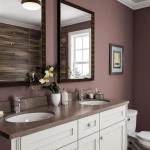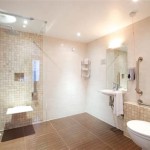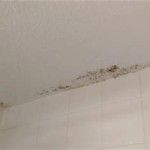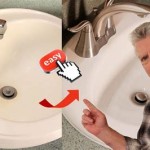How to Get Rid of Ants in Your Bathroom
Ant infestations in bathrooms are a common household nuisance. The warm, humid environment and readily available water sources make bathrooms attractive to various ant species. Addressing an ant problem requires understanding why they are present, identifying the source, and implementing effective elimination and prevention strategies.
Finding ants in a bathroom does not automatically signify poor hygiene. These resilient insects are drawn to even trace amounts of moisture, soap residue, toothpaste, and other organic matter. While a clean bathroom is less appealing, ants can still find sustenance and establish themselves if preventative measures are not consistently taken.
The primary objective in ant control is not just killing the visible ants but eliminating the colony at its source. Worker ants observed foraging in the bathroom are only a small fraction of the overall population. These worker ants are tasked with finding food and water and bringing it back to the colony to feed the queen and larvae. If the colony is not addressed, the problem will persist.
Effective ant control involves a multi-faceted approach that combines identification, sanitation, baiting, barrier creation, and preventative maintenance. Each of these steps plays a crucial role in eliminating existing infestations and preventing future occurrences.
Identifying the Ant Species
Before initiating any treatment, it is crucial to accurately identify the type of ant infesting the bathroom. Different ant species have different food preferences and nesting habits, which directly impact the effectiveness of various control methods. Common ant species found in bathrooms include:
- Pharaoh Ants: These are small, yellow-brown ants that are notorious for forming multiple colonies within a single structure. They are attracted to sweet and greasy food sources.
- Carpenter Ants: These large, black ants are known for nesting in wood, often creating tunnels within structural timbers. While they don't eat wood, their tunneling can cause significant damage. Bathrooms with moisture issues are particularly vulnerable to carpenter ant infestations.
- Odorous House Ants: These brown or black ants emit a distinctive, unpleasant odor when crushed. They are attracted to sugars and moisture and are often found trailing along pipes and countertops.
- Pavement Ants: These dark brown to black ants typically nest outdoors under sidewalks and driveways but can enter buildings in search of food and water.
Careful observation of the ants' size, color, and behavior can help narrow down the possible species. Examining their trails and the location of their entry points can also provide clues to their nesting site. If uncertain, consider consulting with a pest control professional for accurate identification.
Eliminating Food and Water Sources
The most fundamental step in preventing and controlling ant infestations is to eliminate their access to food and water. This involves thorough cleaning and diligent maintenance practices within the bathroom.
- Clean Regularly: Wipe down countertops, sinks, and floors regularly to remove spills, soap residue, and toothpaste remnants. Pay particular attention to areas around the sink and toilet, as these are common areas for food and water accumulation.
- Seal Food Containers: If storing any food items in the bathroom (e.g., pet treats, snacks), ensure they are stored in airtight containers to prevent ants from accessing them.
- Fix Leaks: Address any plumbing leaks promptly, as dripping faucets and pipes provide a constant water source for ants. This includes checking under sinks, around toilets, and in shower areas.
- Dry Wet Areas: Wipe up any standing water after showering or bathing. Ensure proper ventilation in the bathroom to reduce humidity levels, which can attract ants.
- Empty Trash Regularly: Empty bathroom trash cans frequently to prevent the accumulation of food scraps and other organic matter. Consider using a trash can with a tight-fitting lid.
By consistently implementing these sanitation practices, the bathroom becomes less hospitable to ants, reducing their attraction and likelihood of establishing a colony.
Implementing Baiting Strategies
While eliminating food and water sources is essential, baiting targets the entire ant colony, including the queen and larvae. Ant baits contain slow-acting insecticides mixed with attractive food substances. Worker ants consume the bait and carry it back to the colony, effectively poisoning the entire population.
- Choose the Right Bait: Different ant species are attracted to different types of bait. Experiment with various baits, such as sugar-based, protein-based, and grease-based, to determine which is most effective for the specific ant species infesting the bathroom. Gel baits are often preferred due to their ease of application and palatability.
- Place Baits Strategically: Place ant baits in areas where ants have been observed foraging, such as along trails, near entry points, and around water sources. Avoid placing baits in areas that are frequently cleaned or disturbed.
- Avoid Spraying Near Baits: Do not spray insecticides near ant baits, as this will deter ants from consuming the bait and reduce its effectiveness. The goal is to allow worker ants to freely access the bait and carry it back to the colony.
- Monitor Bait Consumption: Monitor the bait stations regularly and replenish the bait as needed. Observe the ants' feeding behavior to determine if the bait is effective. If the ants are not consuming the bait, try a different type of bait.
- Be Patient: Ant baiting is a slow process that may take several days or weeks to eliminate the entire colony. It is important to be patient and consistent with the baiting strategy.
After the ant population dramatically declines or disappears, clean the area thoroughly before removing the bait stations. This will help eliminate any lingering attractants and prevent future infestations.
Creating Physical Barriers
Creating physical barriers can prevent ants from entering the bathroom in the first place. These barriers can be implemented both inside and outside the bathroom to limit ant access.
- Seal Entry Points: Inspect the bathroom for cracks and crevices in walls, floors, and around pipes. Seal these entry points with caulk or sealant to prevent ants from entering. Pay close attention to areas where pipes enter the bathroom from outside.
- Use Insecticidal Dusts: Apply insecticidal dusts, such as diatomaceous earth or boric acid, to cracks and crevices, under appliances, and along baseboards. These dusts act as a desiccant, drying out the ants and killing them. Diatomaceous earth is a non-toxic option that is safe for use around pets and children when applied correctly.
- Apply Insecticide Sprays: Apply a residual insecticide spray around the perimeter of the bathroom and along common ant trails. Choose an insecticide that is specifically labeled for ant control and follow the instructions carefully. Be aware that some insecticides can be harmful to pets and children, so use them with caution.
- Maintain Cleanliness Outside the Bathroom: Extend sanitation practices beyond the bathroom to other areas of the house, particularly the kitchen and areas where food is consumed. This will help prevent ants from being attracted to the house in the first place.
Effective barrier creation requires thoroughness and attention to detail. Regularly inspect and maintain the barriers to ensure they are intact and effective in preventing ant entry.
Preventative Maintenance
Long-term ant control requires ongoing preventative maintenance to minimize the risk of future infestations. This includes implementing consistent sanitation practices, monitoring for signs of ant activity, and addressing any issues promptly.
- Regular Cleaning: Continue to clean the bathroom regularly to remove food scraps, spills, and other attractants. This will make the bathroom less appealing to ants and reduce their likelihood of establishing a colony.
- Monitor for Ant Activity: Periodically inspect the bathroom for signs of ant activity, such as trails, nests, or individual ants. Address any issues promptly to prevent a full-blown infestation.
- Maintain Plumbing: Regularly inspect plumbing fixtures for leaks and repair them promptly. This will eliminate a key water source for ants and reduce the humidity level in the bathroom.
- Proper Ventilation: Ensure adequate ventilation in the bathroom to reduce humidity levels. This can be achieved by opening windows, using exhaust fans, or installing a dehumidifier.
- Professional Pest Control: Consider engaging a professional pest control service for regular inspections and preventative treatments. A pest control professional can identify potential issues early on and implement effective control measures to prevent infestations.
By adopting a proactive approach to preventative maintenance, the risk of future ant infestations can be significantly reduced, ensuring a pest-free bathroom environment.

Ants In Your Bathroom Here S How To Get Rid Of Them Native Pest Management

How To Stop Ants From Invading Your Bathroom Identification And Prevention Tips Tabor Pest Control

How To Get Rid Of Ants In The Bathroom Certified Leak Detection Orlando

How To Get Rid Of Tiny Ants In Your Bathroom

Ants In Your Bathroom Here S How To Get Rid Of Them

Ants In Your Bathroom Here S How To Get Rid Of Them Native Pest Management

How To Get Rid Of Ants In Your Bathroom 7 Methods Today S Homeowner

How To Get Rid Of Ants Scrappy Geek

How To Get Rid Of Ants In The Bathroom Atkinson Inspection Services

Ants In Your Bathroom Here S How To Get Rid Of Them Native Pest Management







